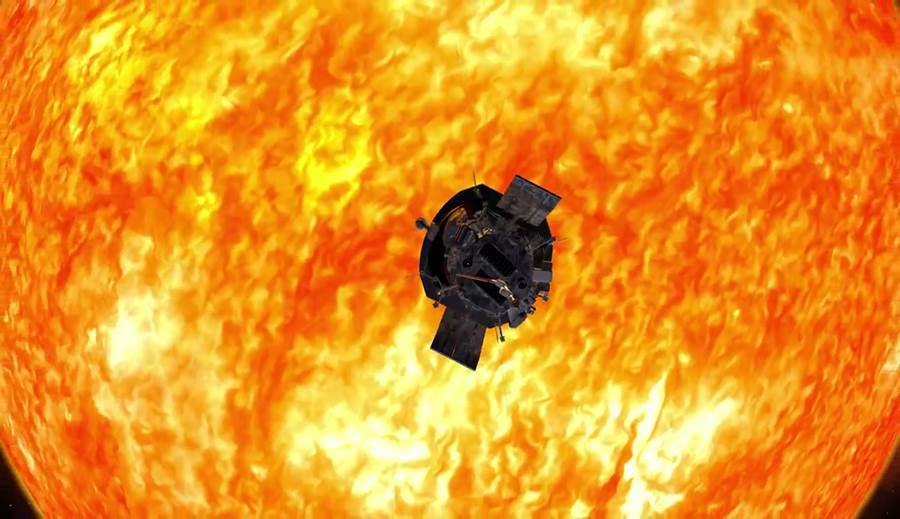Thu 16 December 2021:
A NASA spacecraft has “touched” the sun for the first time, dropping through the corona, a previously unknown region of the solar atmosphere.
On Tuesday, scientists announced the findings at a meeting of the American Geophysical Union.
The Parker Solar Probe soared into the corona during its seventh close encounter with the sun in April.
The data took a few months to arrive, and then several more months to confirm, according to the scientists.
When Parker first crossed the jagged, uneven boundary between the solar atmosphere and outgoing solar wind, it was 8 million miles (13 million kilometres) from the sun’s centre.
According to scientists, the spacecraft dipped in and out of the corona at least three times, each time with a smooth transition.
“The Parker Solar Probe “touching the Sun” is a monumental moment for solar science and a truly remarkable feat,” said Thomas Zurbuchen, associate administrator for NASA Headquarters in Washington.
“Not only does this milestone provide us with deeper insights into our Sun’s evolution and it’s impacts on our solar system, but everything we learn about our own star also teaches us more about stars in the rest of the universe.”
According to the statement issued by the NASA, Parker is finding new discoveries that other spacecraft couldn’t observe because they were too far away, including from within the solar wind, which is the flow of particles from the Sun that can affect us on Earth.
Parker revealed in 2019 that magnetic zig-zag formations in the solar wind, known as switchbacks, are abundant near the Sun.
However, it remained a mystery as to how and where they formed.
Parker Solar Probe has now travelled close enough to identify one spot where they originate: the solar surface, after halving the distance to the Sun since then.
The first flyby into the corona — with the promise of many more to follow – will continue to provide data on processes that are difficult to observe from afar.
Parker will continue to get closer to the sun and dive deeper into the corona until its grand finale orbit in 2025.
The latest findings were also published by the American Physical Society.
SOURCE: INDEPENDENT PRESS AND NEWS AGENCIES
_____________________________________________________________________________
FOLLOW INDEPENDENT PRESS:
TWITTER (CLICK HERE)
https://twitter.com/IpIndependent
FACEBOOK (CLICK HERE)
https://web.facebook.com/ipindependent
Think your friends would be interested? Share this story!





